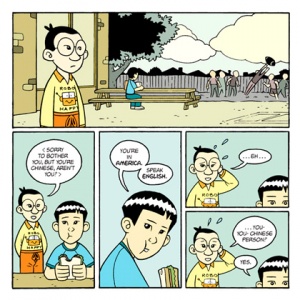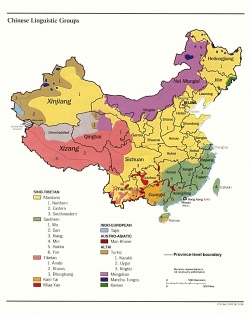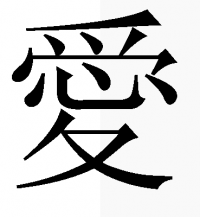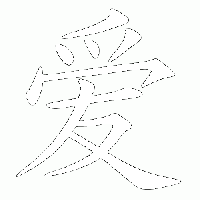From The Peopling of New York City
Contents |
Origins Of Chinese Language
The Chinese language is spoken by over one billion people. Most of the Chinese-speaking populations live in China, Hong Kong, and Taiwan, while there are also several Chinese-speaking communities living in areas of Singapore, Indonesia, Malaysia, and even New York. Especially in New York City, the primary Chinese-speaking communities reside in Chinatown and Flushing.
Under the Chinese Language, there are several major groups and dialects, of which the Mandarin group is the largest one. For that reason, Mandarin is the standard national language spoken across Asia. Other very popular Chinese dialects include Wu, Cantonese, Min, Jin, Xiang, Hakka, and Gan. Usually, a person who speaks one Chinese dialect will not be able to verbally communicate with someone speaking a different Chinese dialect. However, since the written version of the Chinese language is standardized, although people of different dialects are unable to verbally communicate, they may communicate through written word, provided that both parties can read.[1][2][3]
Major Language Groups
Chinese has seven major language groups of which the Mandarin language group forms the largest group. The Mandarin group consists of a wide range of dialects in the northern, central, and western regions. The Cantonese dialects are spoken in Hong Kong, Guangdong, Southern Guangxi Zhuang Autonomous Region, parts of Hainan, Macau, and in many overseas settlements. The Hakka (Kejia) languages are spoken in Guangdong, southwestern Fujian, Jiangxi, Hunan, Yunnan, Guangxi, Guizhou, Sichuan, Hainan, Taiwan, Singapore, Malaysia, Indonesia, many overseas Chinese communities, and in pockets throughout Southeast Asia. Most of the inhabitants of the south central region, in Hunan use the Xiang dialects, also known as Hunanese. The Min dialects are spoken in most of Fujian, large areas of Taiwan and Hainan, parts of Eastern Guangdong and the Leizhou Bandao Peninsula, and in areas of Southeast Asia. Most of the people living in Jiangxi, eastern part of Hunan, and the southeastern corner of Hubei use the Gan dialects. The majority of the inhabitants of Zhejiang, as well as people living in southern areas of Jiangsu and Anhui, speak the Wu dialects. The Wu dialects share marginal mutual intelligibility with the Mandarin and Gan dialects.[4]
The picture to the right is a representation of the different geographical areas in which the different Chinese Dialects are spoken.
Traditional and Simplified Writing
In Mainland China a simplified writing system is used, whereas in Hong Kong, Taiwan, and overseas regions the traditional script is being used. Starting from the second half of the nineteenth century, there was a growing consensus that the writing system constituted an obstacle to the achievement of a higher literacy rate. The simplified writing system differs in two ways from the traditional writing system: (1) a reduction of the number of strokes per character and (2) the reduction of the number of characters in common use (two different characters are now written with the same character). A large-scale reform was continued after the founding of the PRC. In 1955 1,053 variant characters were eliminated. In 1956, the Scheme of Simplified Chinese Characters, known later as the First Scheme, was promulgated by the PRC government. It was composed of 525 simplified characters and 54 simplified basic components of characters. The Second Scheme of Simplified Chinese Characters was promulgated in 1977 but was repealed in 1986 amid general disapproval.[5]
| Number of Characters | Dictionary Period | Date |
| 3,300 | Cangjiepian, Yuanlipian, Boxuepian | Qin 221-206 BC |
| 9,535 | Shuowen jiezi Eastern Han | 100 AD |
| 16,917 | Yupian | Liang 543 |
| 26,149 | Guangyun Northern Song | 1011 |
| 32,200 | Hongwu zhengyun | Ming 1375 |
| 47,043 | Kangxi zidian | Qing 1716 |
| 48,000 | Zhonghua da cidian | ROC 1916 |
| 56,000 | Xiandai Hanyu da zidian | PRC 1986-90 |
Although around 56,000 characters have been accumulated in Chinese, only a few thousand are needed to write Modern Chinese. A large part of the 56,000 characters (40 percent) are variants of a same character (yiti).[6]
| Number of Characters | Coverage Rate (Percent) |
| 500 | 80 |
| 1,000 | 91 |
| 2,400 | 99 |
| 3,800 | 99.9 |
| 5,200 | 99.99 |
| 6,600 | 99.999 |
A Comparison Between Traditional and Simplified Chinese
The traditional Chinese character for love (愛) consists of a heart (middle) inside of "accept", "feel", or "perceive."[7]
In Traditional Chinese, Love is written with a Heart: Ai, or "Love," in the middle.
In Simplified Chinese, Love is written without the Heart: Ai, or "Love," in the middle.
Therefore, Simplified Chinese reduces the number of strokes per character.[8]
References
- ↑ http://www.foreigntranslations.com/page-content.cfm/page/chinese-dialects
- ↑ http://www.chineselanguage.org/content/index.php?c=book&id=25
- ↑ http://www.chineselanguage.org/content/index.php?c=book&id=27
- ↑ http://www.chineselanguage.org/content/index.php?c=book&id=28
- ↑ http://www.chineselanguage.org/content/index.php?c=book&id=34
- ↑ http://www.chineselanguage.org/content/index.php?c=book&id=35
- ↑ http://www.solarnavigator.net/animal_kingdom/humans/love.htm
- ↑ http://thechinadesk.blogspot.com/



